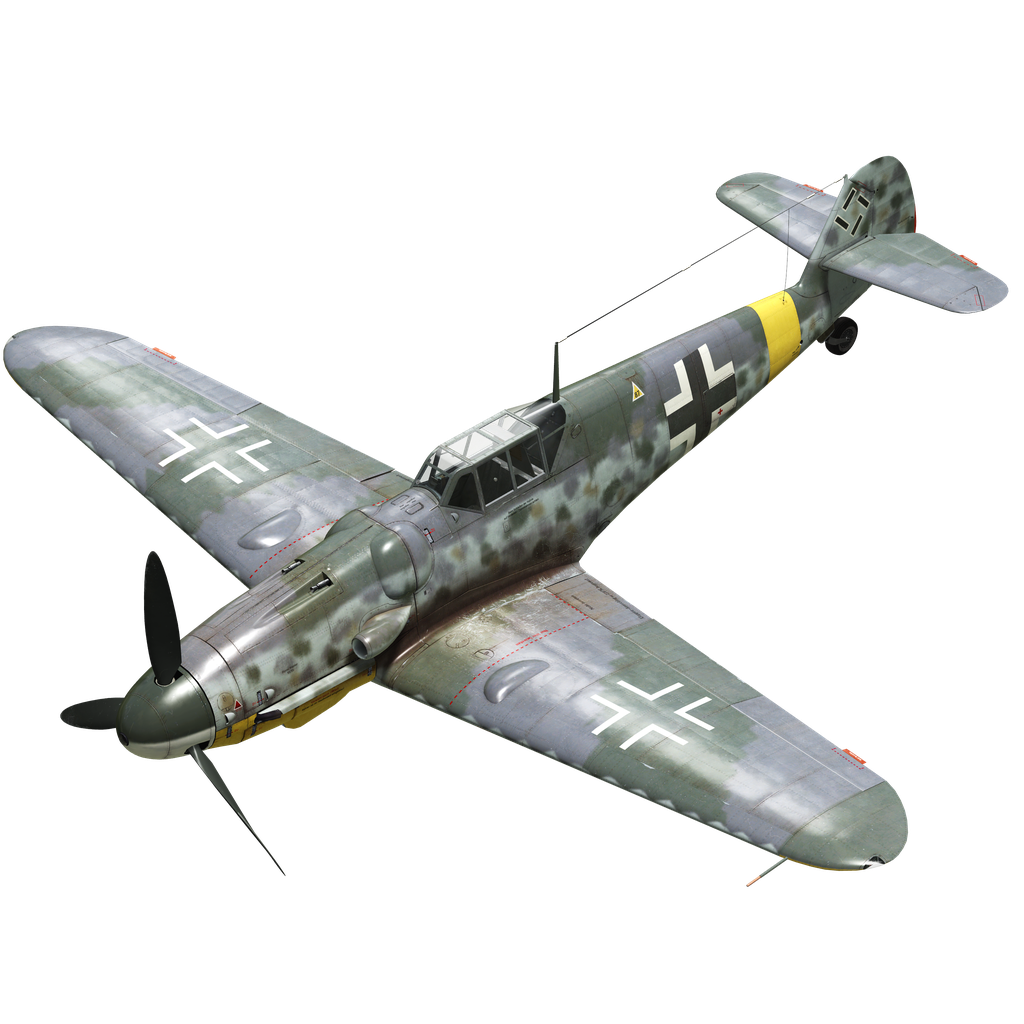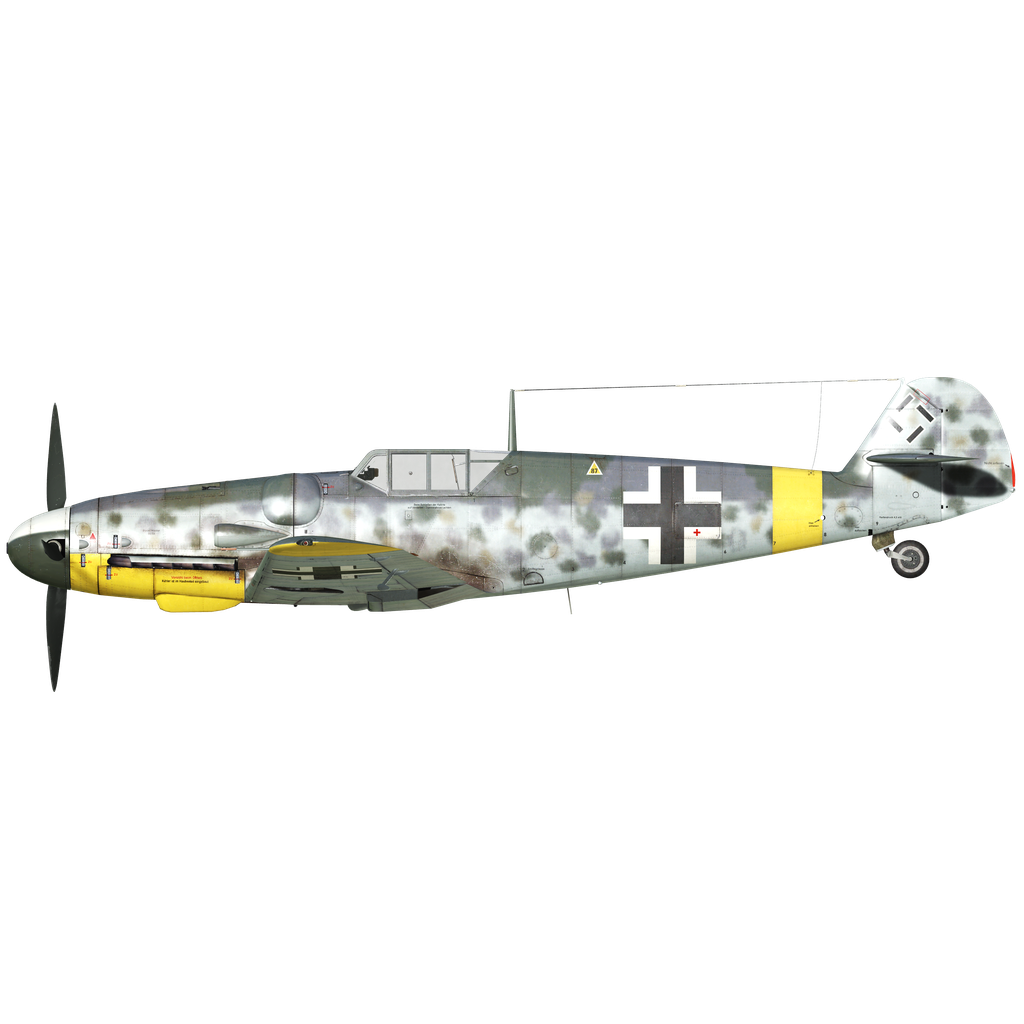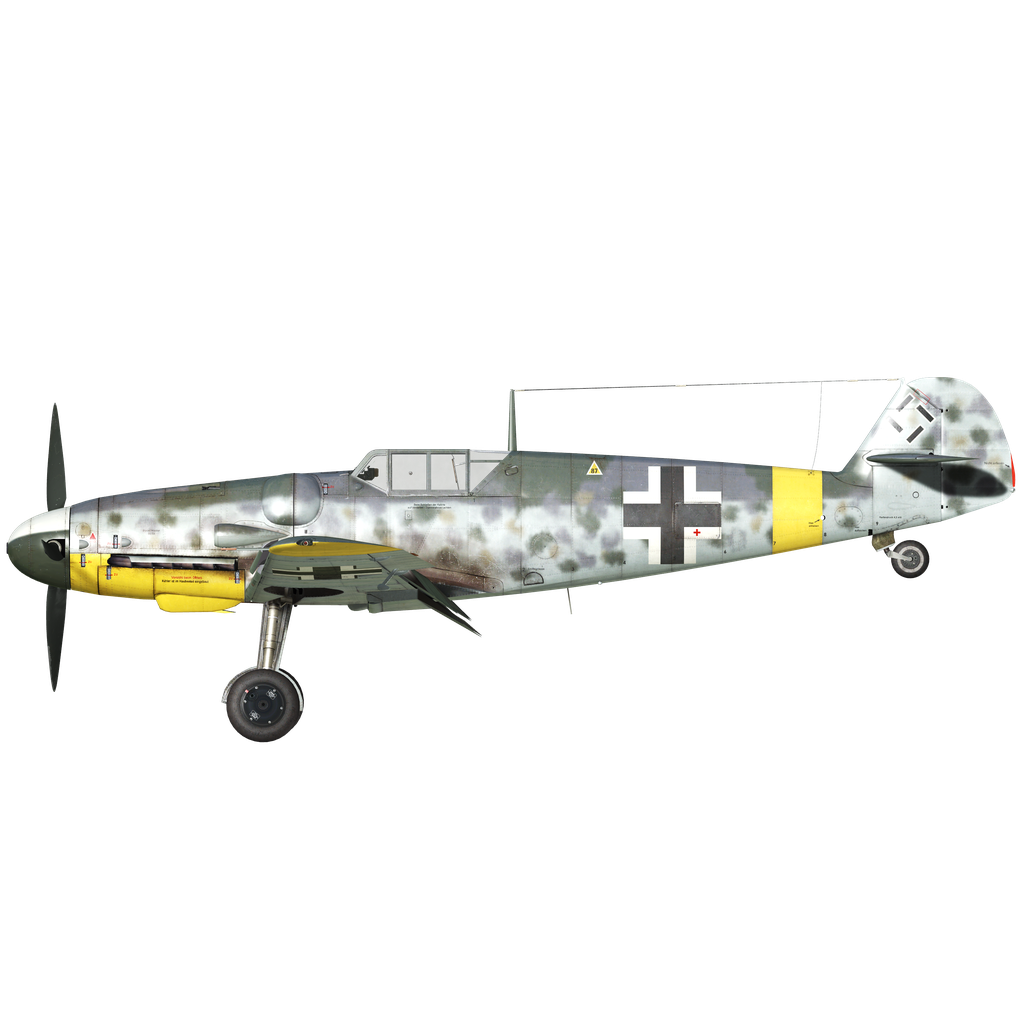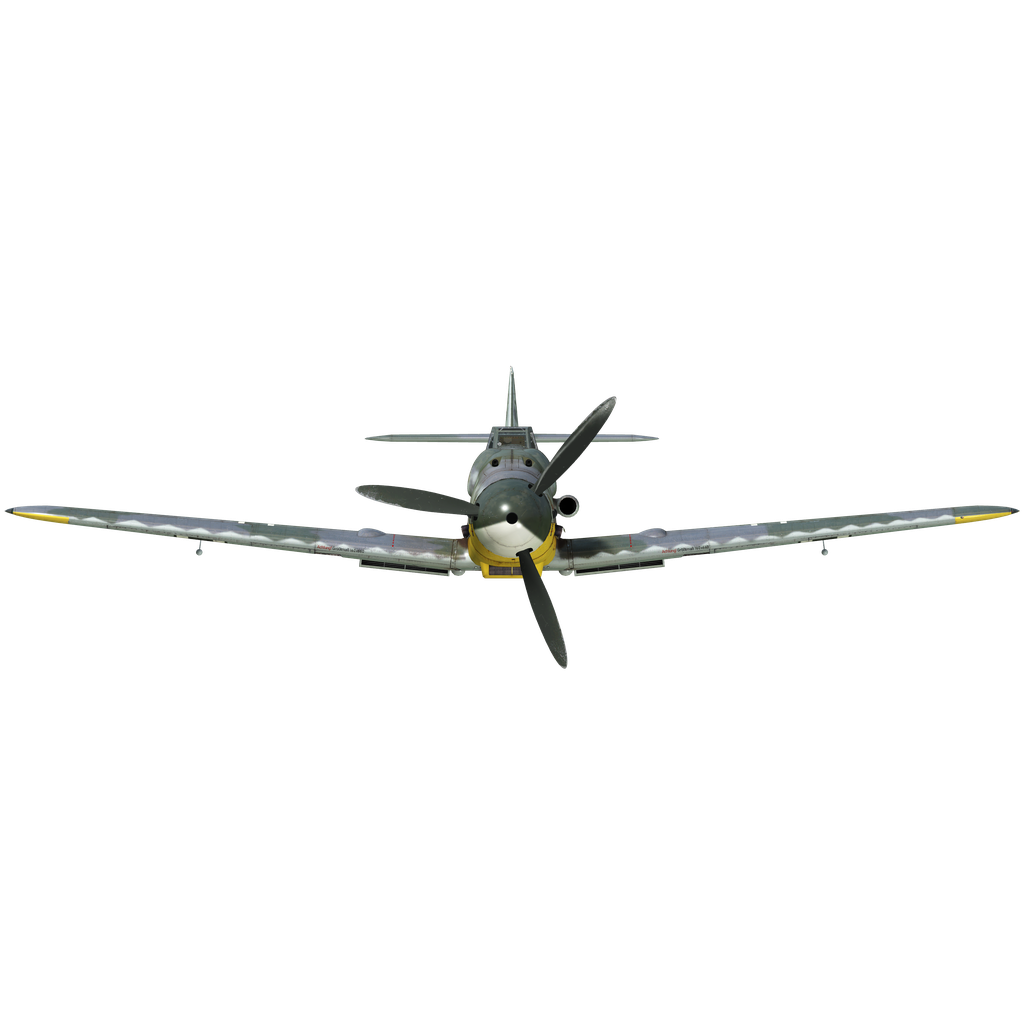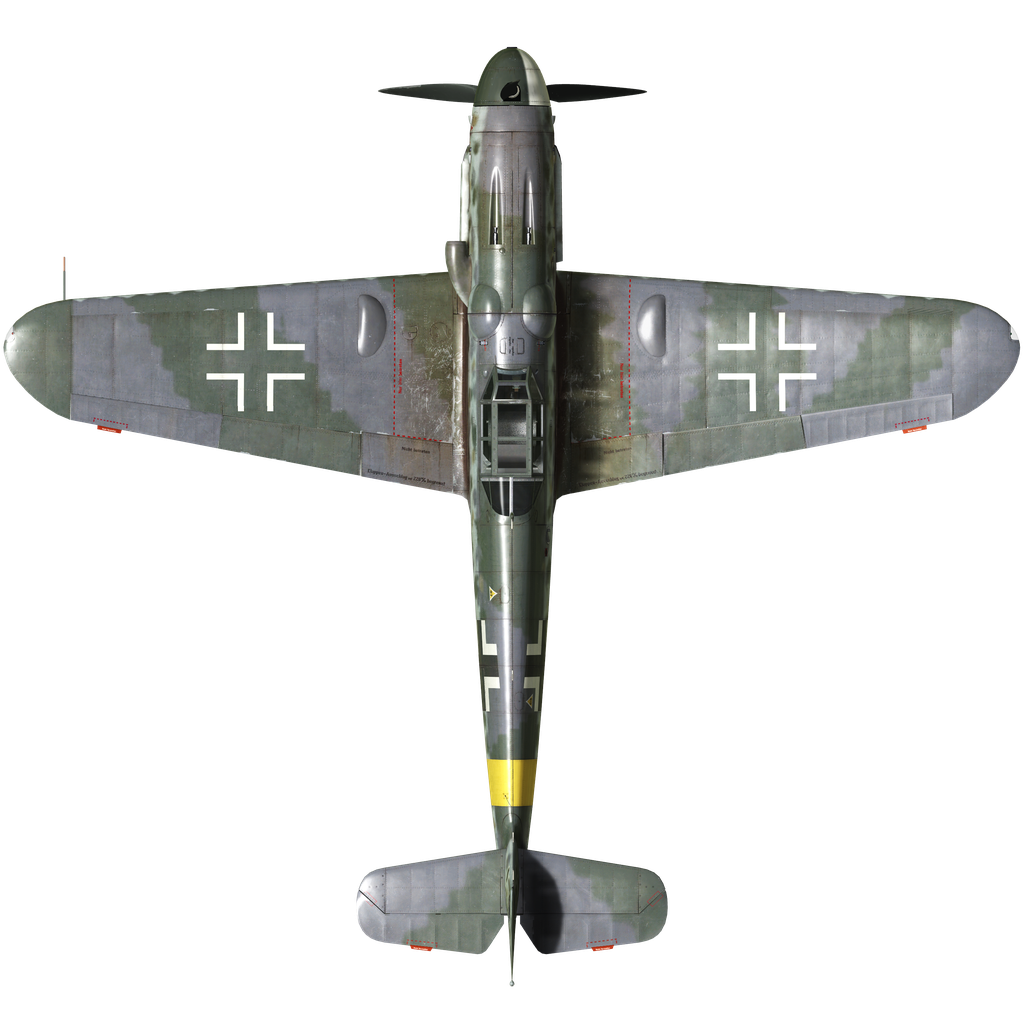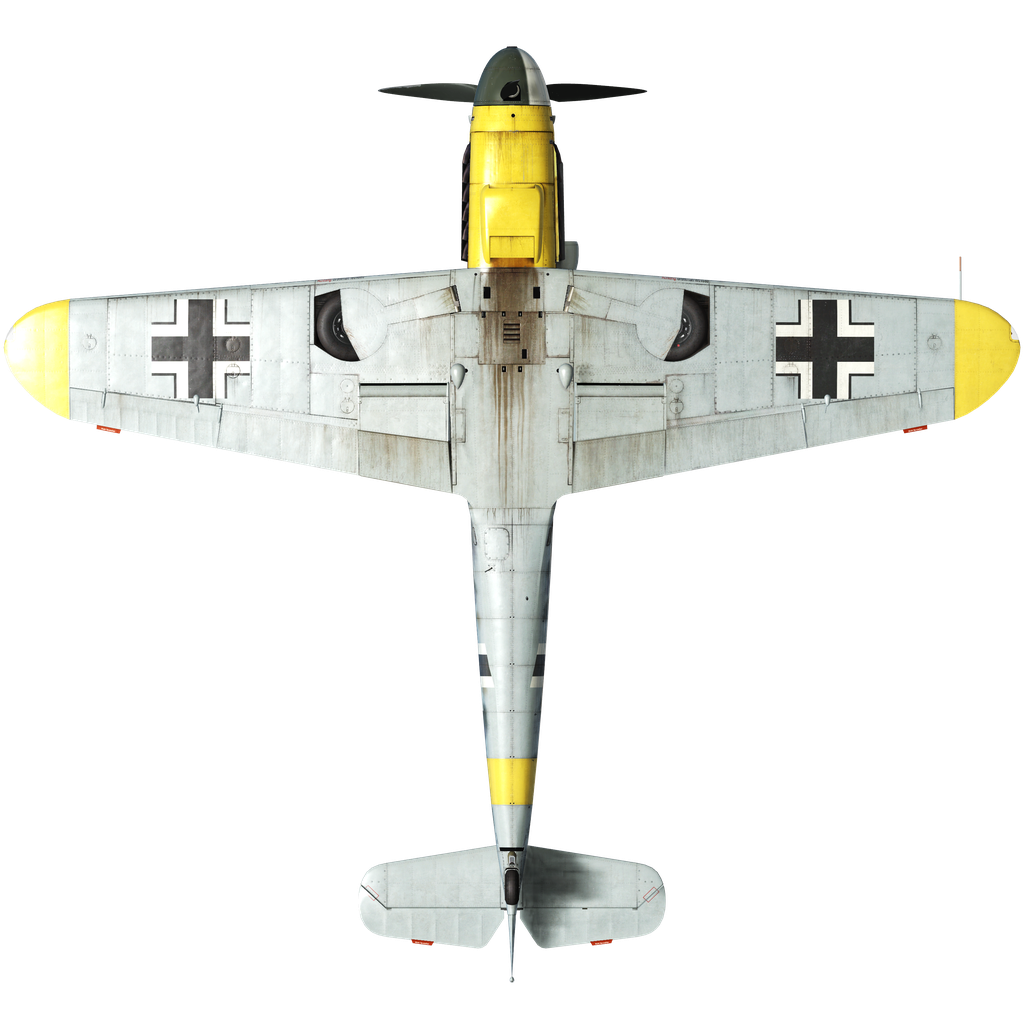The Messerschmitt Bf 109, the most mass-produced fighter of Hitler's Germany, appeared in 1934 in response to the Luftwaffe's request for the latest single-engine monoplane fighter. The prototype's first flight took place on May 28, 1935, and from 1936 to 1942, 6 models were built — from the Bf 109 A "Anton" to the Bf 109 G "Gustav."
In all military campaigns since 1938, the Bf 109 demonstrated clear air superiority over its main rivals — even the relative failure in the Battle of Britain did not shake the Luftwaffe leadership's confidence in the aircraft's capabilities. But in the conditions of rapidly increasing numerical superiority of the Allied fighters, it became simply impossible to shoot down heavy bombers and armored Il-2s with rifle-caliber weapons. Attempts to increase the fighter's firepower by installing cannons in gunpods were unsuccessful. The result was a loss of maneuverability, and it was difficult to engage enemy fighters. The idea of increasing the fighter's firepower by replacing the 7.92 mm machine guns with large-caliber ones was born after numerous complaints from pilots. The installation of MG 131 machine guns with sufficient ammunition required changes in the design of the engine cowls with the addition of characteristic bulges on the sides, which were called "bumps" — this eventually became the nickname of the entire aircraft.
This fighter was available in a conventional version as well as a tropical version without a pressurized cabin and with the DB-605A-1 engine. The Bf 109 G-6 had many variants during series production, especially in terms of armament and engine boost systems.
-
U2 - built-in GM-1 high-altitude boost system;
-
U3 - built-in, non-removable MW 50 boost system kit for increasing flight speed at low and medium altitudes by injecting a water-methanol-oil mixture. From May 1944 this installation became standard and was installed in all fighters not equipped with GM-1;
-
U4 - installation of 30 mm MK 108 cannon between the engine cylinder banks, firing through the propeller shaft;
-
U5 - the same installation as U4, plus two more MK 108 cannons in gunpods (unlike the pre-production variant, the cannons were mounted on the underside of the wings and could not be removed). This kit was planned but never used.
-
U6 - MK 103 30mm cannon mounted between the engine cylinder banks. This kit was planned but was never used.
It should be noted that the MK 103 and the MK 108 had different ammunition for the same caliber, but the MK 108 had a higher rate of fire and lower recoil with less powerful ammunition, making it best suited for use on fighters in aerial combat.
In October 1943, the Bf 109 G-6/U4/R4 was built and tested with an unusually powerful armament consisting of three MK 108 30mm cannons (total of 165 rounds) and two 13mm machine guns. It was found that the guns were not yet fully developed, with frequent stoppages in firing.
-
R1 - Removable ETC 500/IX bomb rack under the fuselage to carry an SC 250 bomb;
-
R2 - Installation of an RB 50/30 camera behind the cockpit and installation of an ETC 50 VIId pylon for four 50 kg bombs;
-
R3 - Special rack for 300-liter drop tank only;
-
R4 - SD-2 fragmentation bomb container carrier mounted under the fuselage;
-
R6 - similarly suspended gunpods, but with 20 mm MG 151/20 cannons;
-
R7 - installation of radio direction-finding equipment;
-
R8 - photographic camera gun in the leading edge of the starboard wing.
The Bf 109 G-6, which was in production from February 1943 to the summer of 1944, was the longest-lived member of the Bf 109 family and its most mass-produced variant: more than 12,200 aircraft of all variants were built. It was believed that the fighter could be used in different climatic conditions from the Arctic Circle to Africa, and could fight effectively both close to the ground, as was often the case on the Soviet-German front, and at high altitude against groups of Allied heavy bombers.
Sources used:
1. W. Creen "The Warplanes of the Third Reich", Galahad Books, 1986
2. "Wings of the Luftwaffe" Translation of W. Green's book "Combat Airplanes of the Third Reich" by A. Firsov, 1993.
3. "Yak-1,7,9,3/ Bf 109 fighters" Journal of Aviation and Cosmonautics, 5-6, 1999.
4. Materials of the site airwar.ru
